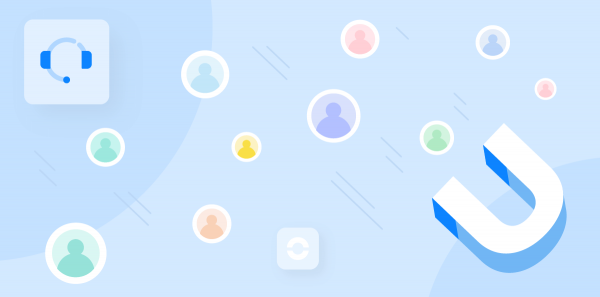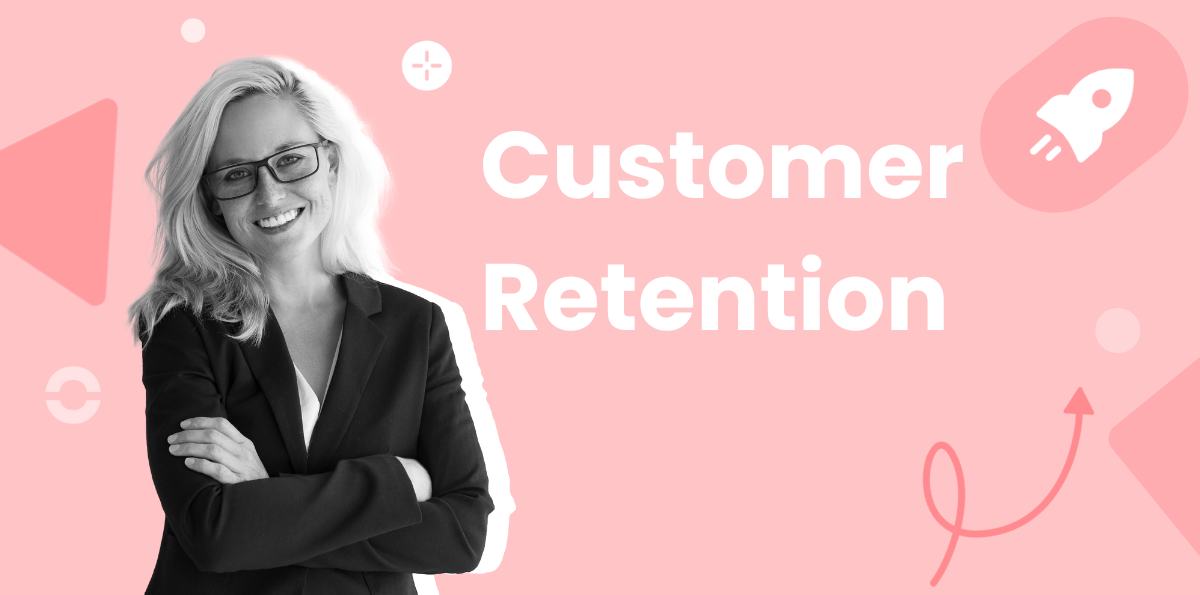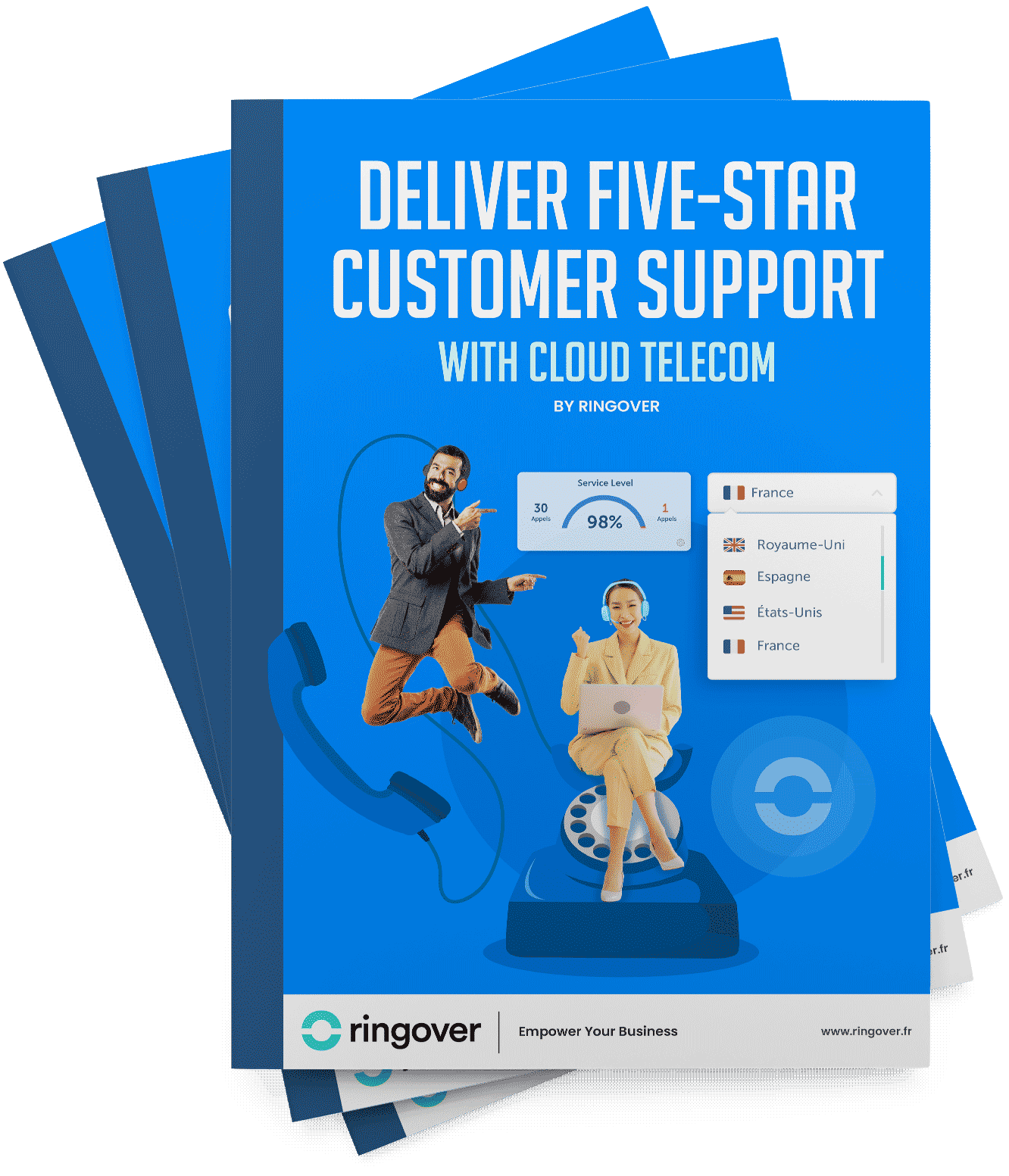Summary
- Customer Retention Definition
- Table: 7 effective strategies to combat churn
- The Benefits of Good Customer Retention
- Focus on Best Practices for Customer Retention (with Examples)
- 1. Respond Quickly to Problems: Excellent Customer Support
- 2. Personalise the Customer Experience
- 3. Understand Customer Expectations
- 4. Reward Loyalty
- 5. Continuous Improvement
- 6. Offer Original Content to Your Customers
- 7. Simplify Business Processes
- So, How Do You Retain Customers?
- Customer Retention FAQ
However, customer retention is a crucial lever to support growth and stay on track with profitability objectives. So, what are the best retention strategies and how can they be deployed? What tools should be prioritised? Let's start with a brief reminder of what customer retention is.
Try Ringover For FreeCustomer Retention Definition
Customer retention is essentially the art of maintaining a loyal customer base. It can be defined as an organisation's ability to keep satisfied customers over the long term.
This concept is particularly important for SaaS companies that offer their products and services through subscriptions. Customer retention is, moreover, a critical factor for a company's success.
It's worth noting that acquiring new customers is more expensive than retaining existing ones. According to the Harvard Business Review, customer acquisition is 25 times more costly than customer retention.
Table: 7 effective strategies to combat churn
| Customer Retention Strategy | Description and Examples |
|---|---|
| React quickly to problems | Quick handling of requests, training in complaint management, prompt receipt of complaints, problem analysis, complaint follow-up, compensation policy, improvement of productsservices. |
| Personalize the customer experience | Tailored offers, personalised communication, predictive analysis, use of omnichannel tools. |
| Collect and understand customer expectations | Surveys, customer reviews, data analytics, listening to customers, supervision of requests, monitoring social media. |
| Reward loyalty | Rewards program, VIP statuses, exclusive benefits, promotions, access to VIP events. |
| Continuously improve | Regular exchange with customers, taking feedback into account. |
| Offer original content | Blog articles, newsletters, videos, webinars, exclusive offers. |
| Simplify business processes | Use of support forms, specific software, integration of business tools. |
The Benefits of Good Customer Retention
An effective customer retention strategy offers numerous advantages for a business. As highlighted earlier, it helps reduce the costs of acquiring new customers.
Moreover, loyal customers tend to spend more over time. They purchase more products and services, contributing to increased company revenue.
Another benefit of good customer retention is long-term loyalty. Satisfied and loyal customers are less likely to switch to competitors.
They can even become brand ambassadors by using word-of-mouth to recommend the brand to others.
Ultimately, customer retention is an essential lever for any organisation, especially SaaS companies, which are directly affected by the issue of churn.
Focus on Best Practices for Customer Retention (with Examples)
- Being reactive, but also proactive
- Personalising the customer experience
- Collecting and understanding customer needs
- Rewarding loyalty
- Continuously improving
- Offering original content to customers
- Simplifying business processes
1. Respond Quickly to Problems: Excellent Customer Support
Responding quickly when a problem arises, or acting before it even occurs, is a great way to retain customers.
By addressing customer requests and striving to find adequate solutions, the company increases its "retention capital." This can be achieved through:
- Implementing processes to quickly detect problems, whether through traditional customer service or voice of the customer (VOC) analysis tools.
- Training employees in complaint management so they can provide rapid responses.
- Receiving complaints as quickly as possible and keeping customers continually informed about processing times and methods used for resolution.
- Conducting an in-depth analysis of the problem to determine its causes and propose a suitable solution.
- Following up on complaints to ensure they are resolved as quickly as possible.
- Implementing an appropriate compensation policy when necessary.
- Considering complaints to improve products/services and prevent the problem from recurring.
2. Personalise the Customer Experience
Personalising the customer experience is essential for a long-term retention strategy. Customer data provides businesses with the ideal foundation to develop a tailored service offer that meets customer needs. Let's look at this in detail:
Personalised Offers
By analysing purchase data, preferences, and customer journeys, companies can develop personalised promotional offers and product recommendations.
For example, this could include discounts on already purchased or similar items, or suggestions for complementary products. This helps guide the customer's journey and smooth their experience.
Omnichannel Communication
Omnichannel communication is essential. Emails, push notifications, SMS, and other messages should be personalised with the customer's first name and adapted in content and tone according to their profile.
This enhances the customer's feeling of recognition and importance to the company. Omnichannel communication contact centre software can help businesses facilitate exchanges.
Predictive Analysis
Customer data allows companies to predict future needs or behaviours. Conversational analysis enables businesses to detect at-risk customers and implement preventive measures to retain them.
3. Understand Customer Expectations
To better understand your customers' expectations and needs, it is essential to listen attentively and regularly gather their feedback. Here are some best practices and tools:
- Surveys: Send surveys via email or social media to directly ask your customers about their satisfaction levels and what improvements they would suggest. You can also conduct short post-call surveys using your inbound call centre software.
- Reviews: Customer Success Management (CSM) teams should encourage satisfied customers to leave reviews on evaluation sites and provide them with links to simplify the process. Increased monitoring of review platforms is also necessary to respond professionally to all reviews, both positive and negative, and to consider constructive criticism for improvement.
- Data Analytics: Analyse your website's browsing data and purchase journeys to identify where customers abandon their carts. This will give you insights into areas needing improvement.
- Customer Listening: Train your teams to listen attentively to customers, note their feedback, and escalate the information.
- Supervision: Analyse requests addressed to your customer service to identify recurring problems and customer expectations. Ringover, for instance, offers a range of supervision tools (real-time call monitoring, automatic call transcription, call recording, peak activity monitoring, etc.).
- Social Media Monitoring: Monitor mentions of your brand on social media to understand spontaneous customer feedback.
4. Reward Loyalty
Loyalty programs are an excellent way to reward repeat customers and encourage them to remain loyal to your brand. Here are some ideas for rewarding customer loyalty:
To strengthen customer loyalty, you can create a rewards or loyalty program. This program will allow your regular customers to accumulate points with each purchase. These points can be redeemed for various benefits such as discounts, gifts, or exclusive privileges.
Why not introduce VIP statuses based on customer loyalty levels? The more they spend or the more frequently they buy, the more significant benefits they can receive.
As part of this loyalty program, plan to offer exclusive benefits to members. This could include access to private sales, priority customer service, and invitations to VIP events.
Example for a B2B SaaS company
Loyalty can be rewarded through promotions upon renewal, the provision of additional credits, or early access to new products/services.
5. Continuous Improvement
Continuous improvement is essential for keeping customers satisfied in the long term. Companies must constantly look for ways to enhance their products and associated services, avoiding complacency.
Customers need to feel heard and see their feedback reflected in product/service development.
At Ringover, for example, we regularly interact with our customers to gain valuable insights into how they use our solutions. This allows us to include our users in our development process.

6. Offer Original Content to Your Customers
Offering original content is an interesting leverage point for your customer retention strategy. By regularly providing your customers with exclusive information, practical advice, or even entertainment, you demonstrate your expertise and create added value.
This content can take various forms, such as blog articles, newsletters, videos, webinars, or infographics with insights on key topics.
The goal is to maintain your customers' interest and engagement by enriching their experience.
7. Simplify Business Processes
By making it easier for your employees to do their jobs, you create the best conditions for improving your customers' experience. Optimising your workflow can involve:
- Using support forms that address common situations and include a field for more specific scenarios. This not only offers exhaustive options to customers but also helps reduce phone line congestion.
- Using software specifically designed for support and customer service teams (cloud telephony software, CRM, helpdesk, etc.).
- Integrating business tools to prevent CSM agents from switching between tools and to eliminate low-value tasks.
So, How Do You Retain Customers?
Customer retention significantly contributes to a company's growth. Having loyal and satisfied customers is much more profitable than constantly acquiring new ones.
Effective strategies, such as personalising the customer experience, omnichannel communication, and understanding customer needs, rely primarily on reactivity and proactivity.
Retention teams must anticipate expectations, guide the customer journey, and consider feedback to ensure satisfaction.
Ringover supports you in deploying your customer retention strategies by providing sales enablement solutions like Empower to understand your customers and our eponymous cloud contact centre to streamline all your interactions.
To learn more, try Ringover and Empower now–both software offer free trials so you can see the difference for yourself!
Customer Retention FAQ
What is customer retention? (Definition)
Customer retention involves keeping your clientele. It is an organisation's ability to maintain loyal customers over time. It is very important for businesses as it directly contributes to their growth. A good retention strategy allows you to:
- Boost revenue by encouraging customers to buy more often, in larger quantities, or to try new products/services.
- Reduce the costs of acquiring new customers.
- Create both lasting and profitable relationships with your clientele.
- Benefit from positive word-of-mouth from satisfied customers.
- Retain customers in the face of competition.
What KPIs and metrics should you track to develop a good customer retention strategy?
To develop an effective customer retention strategy, it is essential to track certain key performance indicators (KPIs) and metrics. Here are some of the KPIs and metrics to consider:
- Retention Rate: This is the proportion of customers who remain loyal to your company over a given period. To calculate it, divide the number of customers at the end of the period by the total number of customers at the beginning of the period, then multiply the result by 100.
- Churn Rate: Also known as the attrition rate, this KPI measures the percentage of customers lost over a specific period. The formula is: number of customers lost divided by the total number of customers at the beginning of the period, then multiplied by 100. This rate should remain low.
- Customer Lifetime Value (CLV): This metric assesses the average financial value a customer brings to the company over their entire lifespan. It helps determine the ROI of efforts made in customer retention.
- Purchase Frequency: This is the average number of purchases made by a customer over a given period. An increase in this frequency can be correlated with good customer retention.
What is the retention rate?
The retention rate is a key performance indicator that provides information on an organisation's ability to retain its customers over a given period. It indicates the percentage of customers who continue to use the company's products or services.
What is a loyal customer?
A loyal customer is one who continues to do business with a company regularly over a long period. They are generally satisfied with the products or services offered and maintain a lasting relationship with the company/brand. This is manifested through repeated purchases, voluntary subscription renewals, frequent use of an application, etc.



